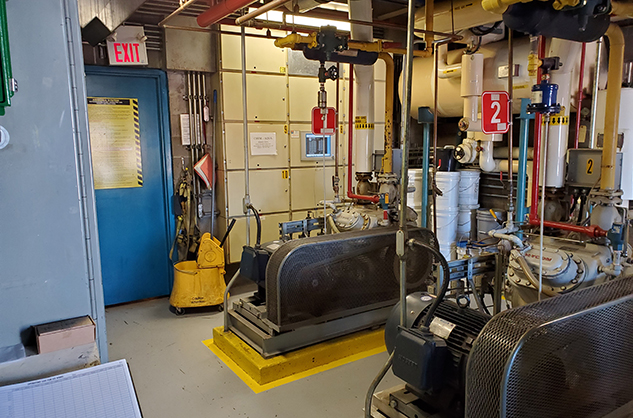- COMPANY
- INDUSTRIES
- PRODUCTS
- SERVICE
- CONTACT
Have you been tasked with doing research on glycol chiller systems for either industrial use or for a brewery, winery or other food industry application? Here are three common questions clients tend to ask when first learning about this type of industrial refrigeration system.

Glycol chillers are industrial refrigeration systems that use a type of antifreeze called glycol to lower the freezing point in the application of the chiller system.
Glycol is an odorless, colorless, viscous liquid that, when mixed with water and pumped through the pipes of a chilling system, functions to slow the rate of freezing. It helps maintain temperature consistency in the application and some glycol products also work to inhibit corrosion and bacterial growth within the pipes of the chilling system.
Glycol comes in two varieties: ethylene glycol and propylene glycol. Both types offer the same relative level of freeze protection. Both also help to guard against corrosion. Some grades of both types of glycol also help to prevent the growth of algae and bacteria within the chiller.
Ethylene Glycol
Ethylene glycol is a moderately toxic chemical that has a sweet taste and can be harmful if swallowed. For this reason, it should not be used in potable water or food processing systems when leakage is a possibility.
Ethylene glycol has more widespread use due to its lower purchase price. Industrial applications like ice rinks and factories requiring large volumes of the coolant find this to be the most economical choice of glycol.
Propylene Glycol
Propylene glycol has a lower level of toxicity and is considered to be a food grade antifreeze. This type of glycol is safer to handle than ethylene and can be more easily disposed of. Propylene glycol is commonly used in food Industry or in industrial refrigeration systems where people may come into contact with fluid.
Propylene can also become more viscous than ethylene, even slightly affecting the heat exchange rate when used at very low temperatures.

The ratio of glycol to water in your chilling system depends on the coldest temperature that the glycol solution reaches during operation. If a chilling system is used indoors where there is no chance of freezing, the amount of glycol needed would be significantly less than that required by a glycol chiller used outdoors where temperatures are prone to drop below freezing.
Also, if an application requires a very low temperature to operate it should use a glycol mixture similar to outdoor systems.
In a chiller, this temperature is normally the saturated suction temperature in the evaporator, and normally this temperature is 10°F below the chiller set point temperature.
Using the proper ratio of glycol and water in your chilling system is very important. Adding too much to your chiller system will cause it to become inefficient. However, not enough glycol could cause the system to freeze up, potentially bursting pipes or even rupturing the chiller evaporator.
The type of water used also has an impact on how your glycol chiller operates. Read more about how process water can affect a chilling system’s performance.
Berg Industrial Service installs and services glycol chillers used in a wide variety of applications. We can point you to the best glycol chiller for your application. Contact us to learn more about the type of glycol chilling system that is right for your business as well as the best percentage you will require for your application.